Citroën Celebrates Its 100th Anniversary with an All-Electric Ami One Concept
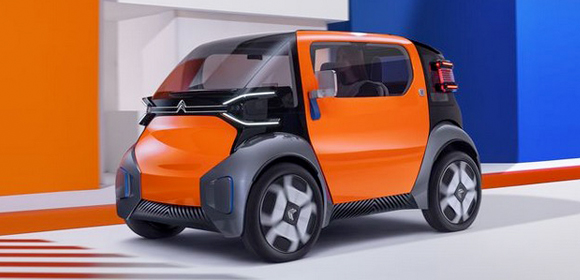
For its 100th birthday, Citroën says that it is “reinventing itself and unveiling an uninhibited take on an urban mobility concept” at next month’s Geneva International Motor Show. The pre-show announcement of the Ami One Concept is their vision of urban mobility – an all-electric vehicle outfitted for a generation acclimated to on-demand rentals and ride-sharing.

Citroën truly got innovative with this one! From a styling standpoint, it’s certainly as controversial as the original Ami 6. Designed as a 2-seat, urban mobility vehicle, Citroën says it evokes the spirit of the iconic 2CV. However, 2CV curves give way to a chunky squat profile that looks more like a cubed ladybug resting four-spoke 18-inch wheels.
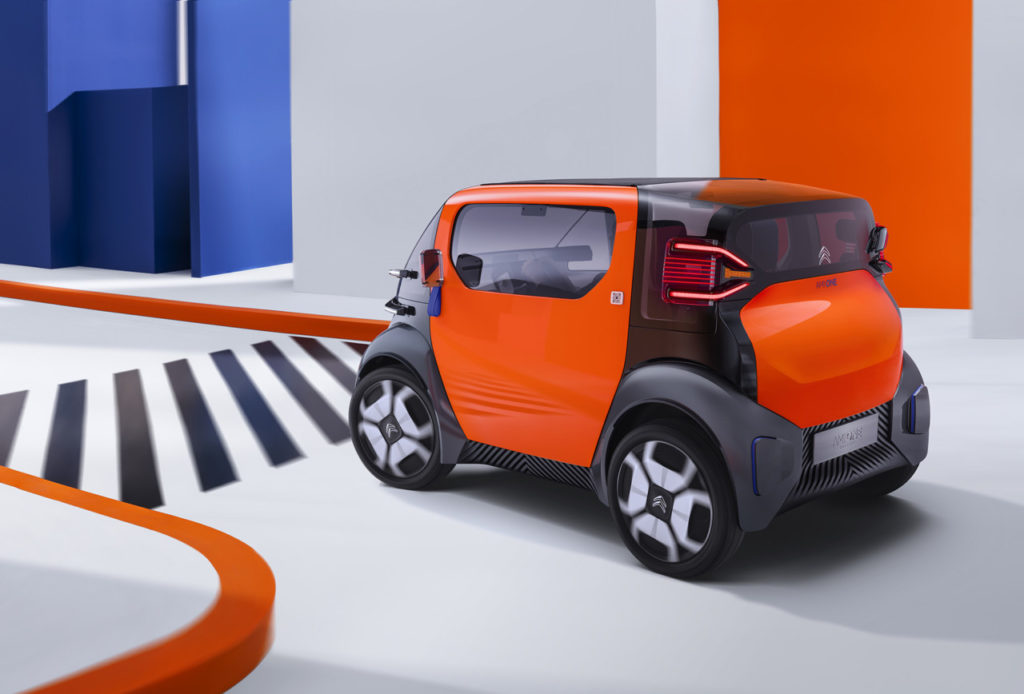

Citroën has stated that the Ami One Concept is about 8 feet in length and weighs just under 1,000 pounds. The only performance details given are a top speed of 28 mph and enough battery capacity for 62 miles of range.
To appeal to the youth, the Ami One Concept can be driven by anyone ages 14 and up. In some countries in Europe—France
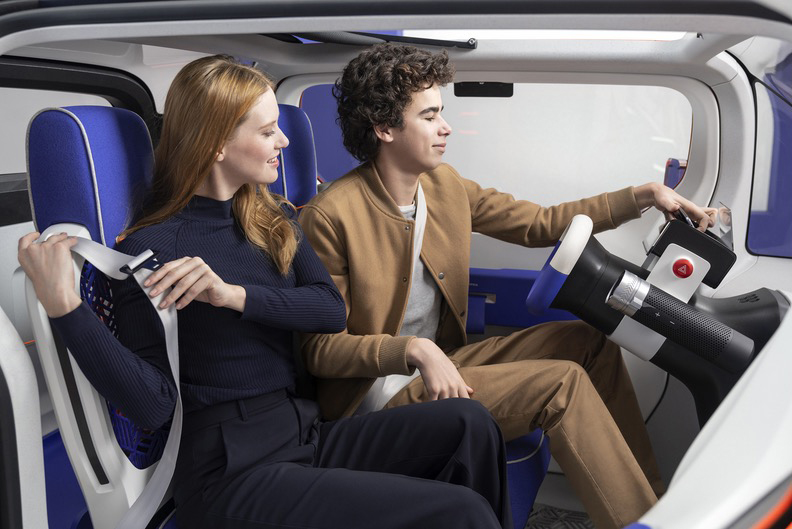
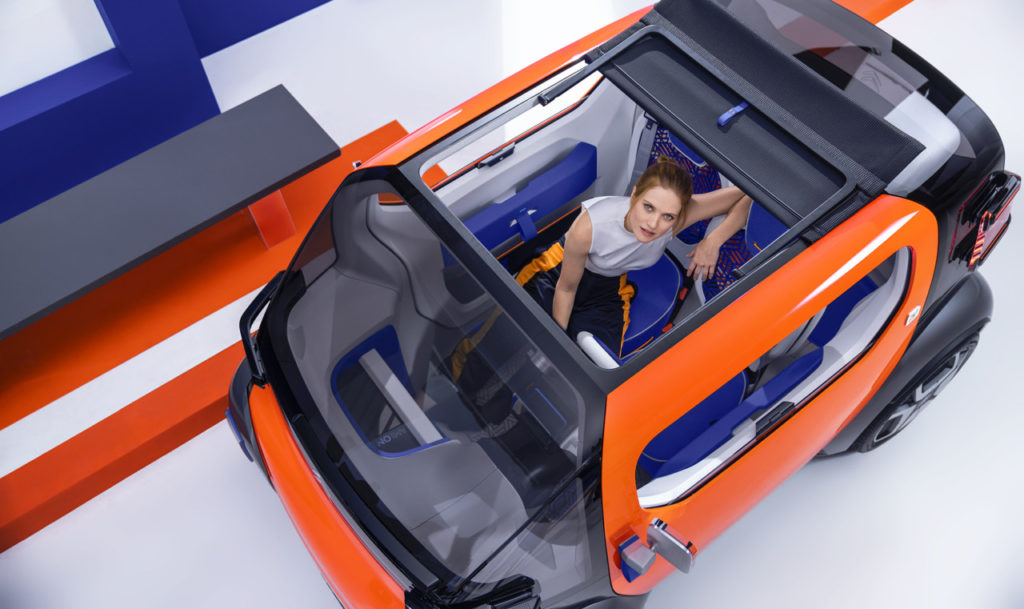
Quadricycles are limited to a top speed of just 28 mph, and they can’t be driven on major roads or highways. They are designed to be used as “an alternative to public transport (bus, tramway, metro) and
Similar to popular app-accessible, on-demand urban scooters, the Ami One Concept’s doors lock and unlock via a QR code via smartphone; inside, a dedicated space outfitted with an induction charging area offers passengers a place to keep their phones, while also connecting the vehicles features and comfort options through the user’s own device (including voice-activated interactions to ensure hands-on safety).
When placed on the dashboard, a smartphone turns into the main display by projecting onto a panel in the driver’s view like a head-up display, showing infotainment and navigation functions. The Ami One Concept also uses a Siri-like voice assistant.
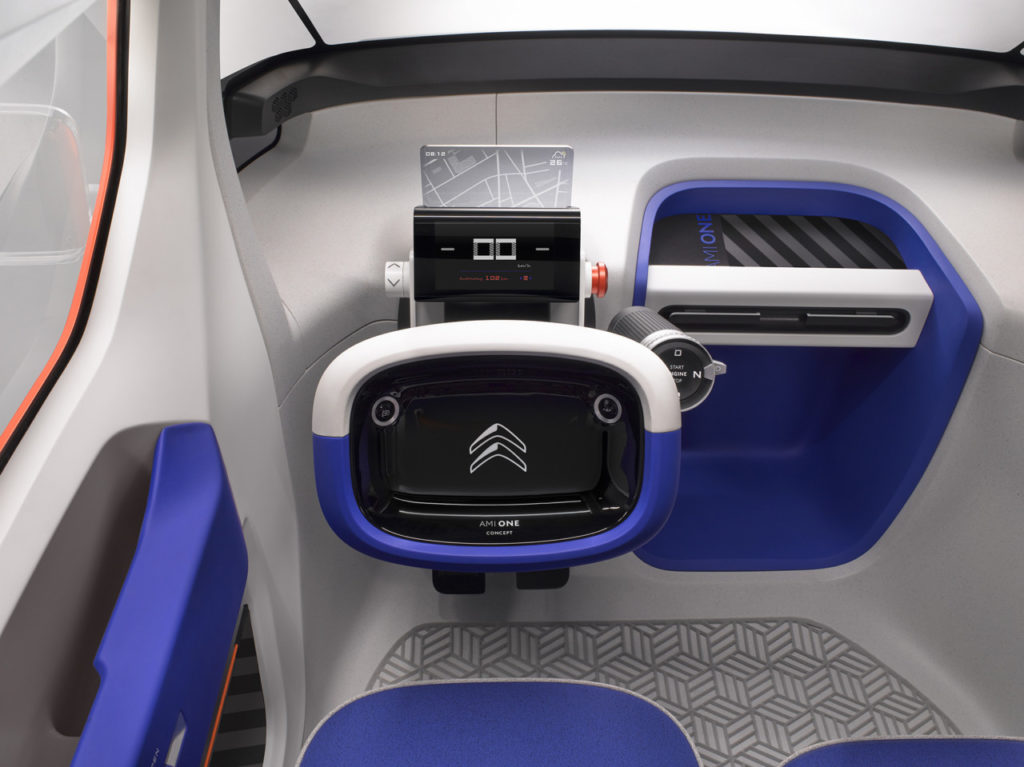
Citroën says that the blue-and-white interior of the Ami One is a “modern vision” of the brand’s Advanced Comfort design and engineering philosophy, with a ton of light coming into the cabin, a silent ride, and super comfortable seats. Materials including PVC and canvas have been used, and the whole design is simplistic but intriguing. The layout of the seats is asymmetrical, with the driver’s seat positioned ahead of the passenger’s to give both occupants a good amount of head- and legroom. The driver’s seat is also situated on rails, while the passenger seat is fixed. There’s a space in front of the passenger for bags, and luggage can be placed behind the seats.
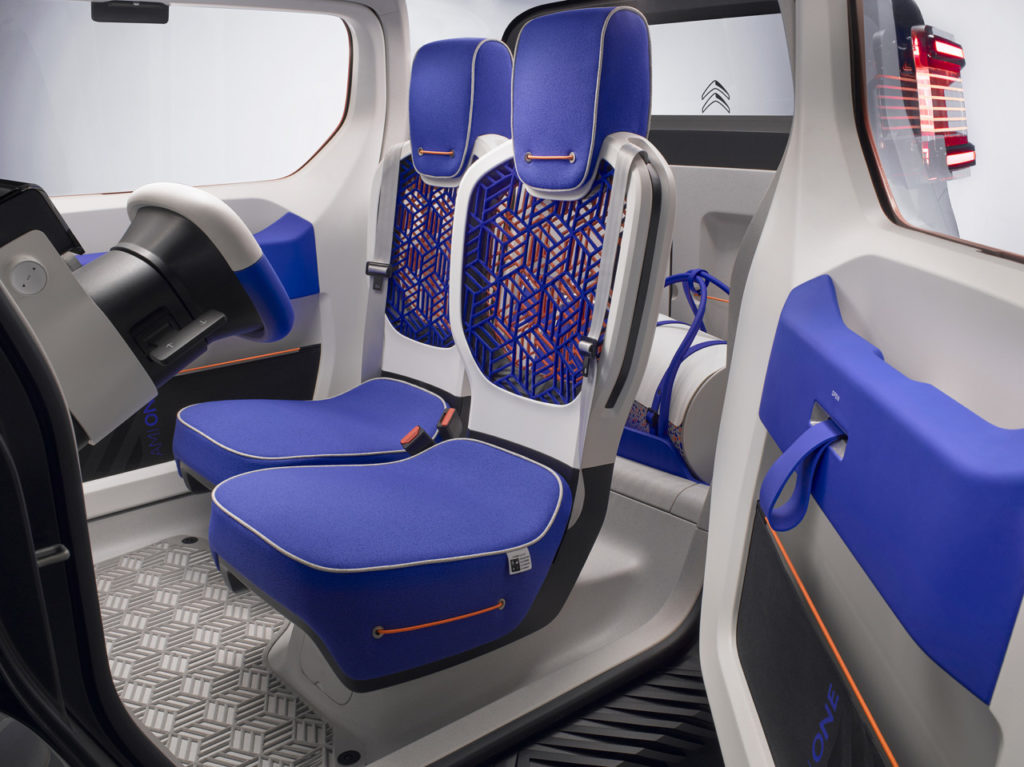
Rear-hinged driver and front-hinged passenger doors give a plethora of options for access and egress. There’s no rear hatch opening, though.
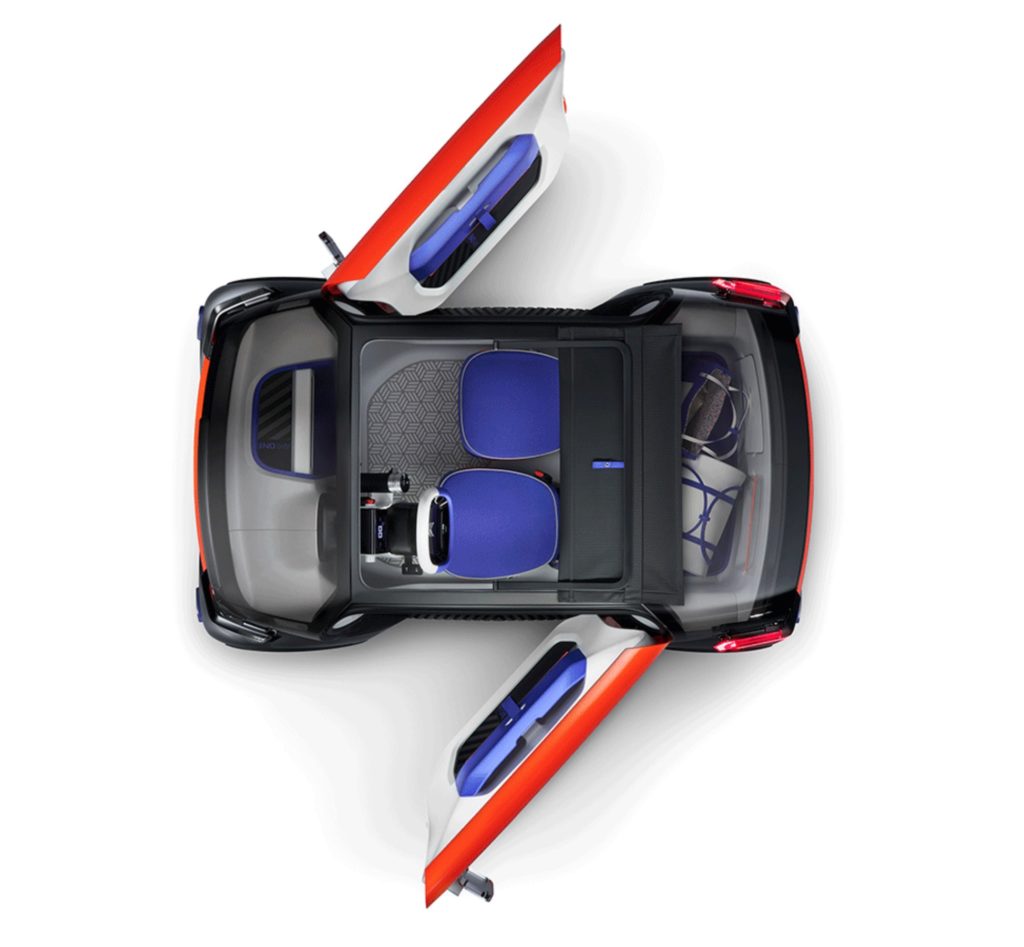
Building upon the popular convenience of on-demand rentals, Citroën envisions the Ami One Concept as a flexible use option for anyone seeking a vehicle, whether it be a 5-minute drive down to the market up to a 5-year long term lease. They describe the market this way:
- 5 minutes or 5 hours: the mobility object is made available at a given location for a given period of time through a car-sharing offer operated by the Free2Move brand. Using the app dedicated to new forms of mobility, customers can choose their Ami One Concept in a few clicks.
- 5 days: The mobility object is available in the form of an easy-access short-term rental offer. The customer simply reserves the vehicle
on line at Citroën’s Rent&Smile site. - 5 months: Commitment-free access for a shorter period of time than “conventional” ownership.
- 5 years: The mobility object is also available as part of a five-year long-term leasing option with battery, maintenance and parking included in the monthly payment; With the 100% online purchasing journey, customers can choose the delivery location, be it at their home or the closest point of sale.
Reinforcing the lifestyle angle, the Ami one Concept is also complemented by a whole slew of lifestyle accessories designed in partnership with French leather goods designer, Damien Béal, including exclusive luggage created to complement the concept’s form and Colorway, a backpack sized to fit in the storage space in front of the passenger, a shopping basket, and a cylinder-shaped travel bag.
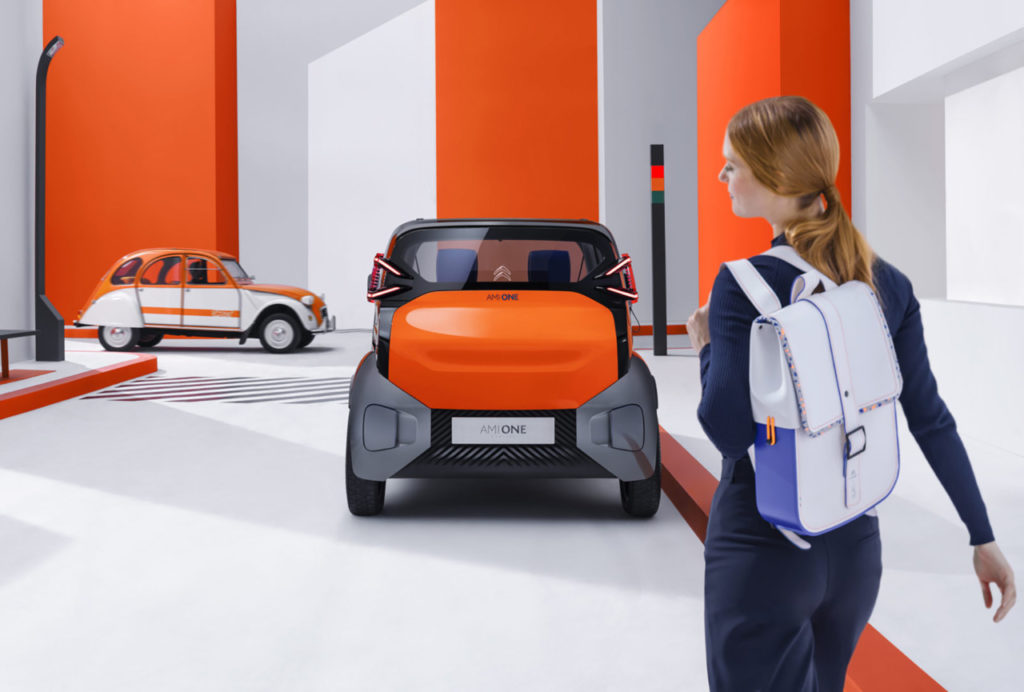
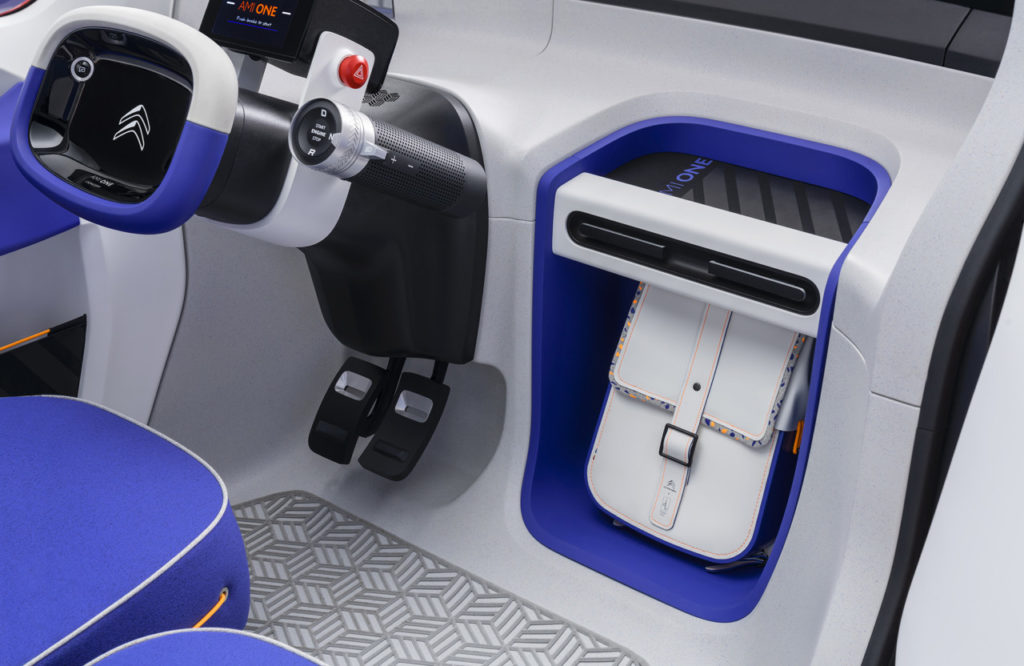
Citroën says that if
No doubt a Hyundai rip-off will follow shortly! 🙂

Watch the introductory video below:

Update – Feb. 22, 2019:
Citroën is not alone on this theme. Within 48 hours of the Ami One Concept announcement, BMW and Daimler unveiled a joint venture to invest in driverless vehicles, ride-hailing and parking services. The German firms are investing €1bn in the project, which will also look into pay-per-use car schemes.
Daimler’s chief executive Dieter Zetsche said; “Further co-operation with other providers, including stakes in start-ups and established players, are also a possible option.”
Daimler’s Car2Go car-sharing brand will be combined with BMW’s DriveNow, ParkNow and ChargeNow businesses, with both carmakers holding a 50% stake in the venture which will market:
- Reach Now: a smartphone-based route management and booking service
- Charge Now: expanding electric car charging
- Free Now: for taxi ride-hailing
- Park Now: dedicated to offering parking services
- Share Now: for car-sharing.
Harald Krüger, chairman of BMW’s management board, said; “These five services will merge ever more closely to form a single mobility service portfolio with an all-electric, self-driving fleet of vehicles that charge and park autonomously,”
Both companies have been working to develop autonomous car technology. Many analysts have argued that to survive against the tech giants, traditional car manufacturers must develop services based on usage rather than sales.
